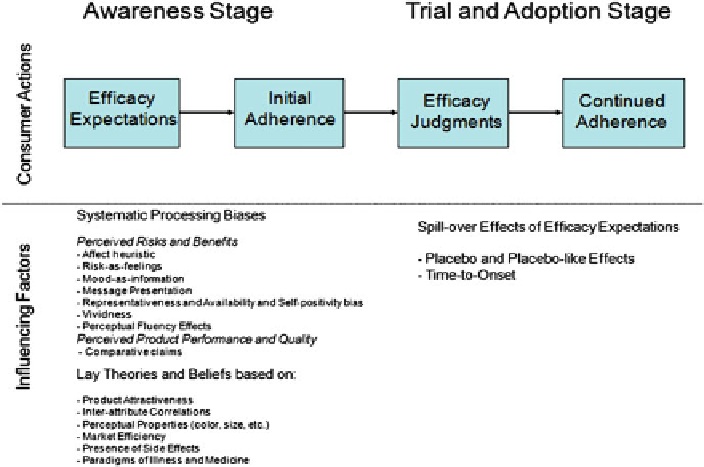Biomedical Engineering Reference
In-Depth Information
Fig. 11.2
Effi cacy perceptions and adherence at two primary stages of the evaluation process
solution for their ailments in the fi rst place). Thus, effi cacy perceptions affect
consumer behavior at two primary stages of the evaluation process: fi rst, at the aware-
ness stage, when consumers are exposed to information about the medication for the
fi rst time, estimate its effectiveness, and decide to initiate usage (i.e., initial adherence),
and second, at the trial and adoption stage following initiation of the medicinal regimen,
when they are able to judge its effectiveness (i.e., continued adherence). Adherence at
the second stage entails proper utilization of medication, such as adherence to the
recommended dosage and consumption duration (see Fig.
11.2
).
11.1.1
Stage 1: Awareness
At the awareness (acquisition) stage, adherence is determined by the extent to which
pharmaceutical marketers are able to persuade consumers to inquire about a specifi c
medication or treatment (e.g., ask their physicians about the medication) and begin
usage. Such adherence, however, is driven by medicinal
effi cacy expectations
that,
as we discuss later, are ultimately formed on the basis of heuristics and biases
(depending on the way the product and information thereof is conveyed). Naturally,
pharmaceutical marketers seek to increase the adherence rate by heightening
consumers' effi cacy perceptions via direct-to-consumer (DTC) advertising.
At this initial stage of medication assessment, consumers often attend to the risk
and benefi t information and make trade-offs between attributes. While traditional

Search WWH ::

Custom Search